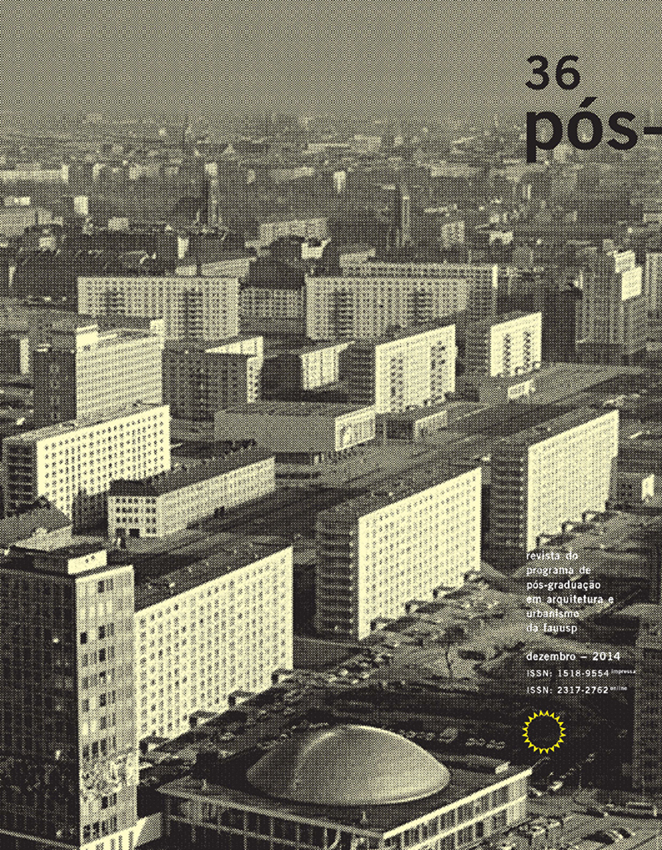The Luz railway station and the Barra Funda terminal: integration with the subway network
DOI:
https://doi.org/10.11606/issn.2317-2762.v21i36p160-172Keywords:
Railway. Subway. Modal interchange. Railway station. Subway station. Intermodal terminals.Abstract
This article describes the changes that occurred at the Luz and Barra Funda railway stations in the city of São Paulo as a result of their physical integration with the subway network. These stations were selected because they represent the predominant types: the connected structure, which links existing buildings at Luz, and the shared structure, conceived to serve both systems in the mezzanine of the Barra Funda terminal. At the Luz station, the tracks are vertically separated, and the existing stations are integrated through a passenger transfer tunnel, which links the subway underground mezzanines to the two halls underneath the railway platforms. At the Barra Funda terminal, as the tracks are contiguous on the ground, the construction of a shared mezzanine serves both transportation systems, greatly benefiting the passenger transfer process. The historical Luz station building was preserved by the construction of underground halls and connections to the subway. However this posed dimensional restrictions and demanded high operation costs. Even if the underground integration tunnel maintains the shortest traffic route throughout, the width of the tunnel does not support the current passenger demand. On the other hand, the shared mezzanine at the Barra Funda terminal results in shorter system integratio distances and the elimination of conflicts between the inbound, outbound, and transfer flows. The structures are compact and the walkway meets traffic demand, but the railway station seems to be diluted among the other terminal services.
Downloads
References
ASSOCIAÇÃO BRASILEIRA DE NORMAS TÉCNICAS. NBR 9050:2004 – Acessibilidade a edificações, mobiliário, espaços e equipamentos urbanos. Rio de Janeiro, 2004.
BARMAN, Christian. An introduction to railway architecture. London: Art and Technics Ltd, 1950. 104 p.
BINNEY, Marcus; PEARCE, David. Railway Architecture. London: Orbis, 1979. 256 p.
BLOW, Christopher J. Transport terminals and modal interchanges: planning and design. Oxford: Architectural Press, 2005. 196 p.
COMPANHIA DO METROPOLITANO DE SÃO PAULO. Demanda. Disponível em: http://www.metro.sp.gov.br/metro/numeros-pesquisa/demanda.aspx. Acesso em: 01 mar. 2014.
COMPANHIA PAULISTA DE TRENS METROPOLITANOS. Dados Gerais. Disponível em: http://www.cptm.sp.gov.br/e_companhia/gerais.asp#. Acesso em: 01 mar. 2014.
EDWARDS, Brian. The modern station: new approaches to railway architecture. London: E & FN Spon, 1997. 199 p.
FERNANDES, Bruno Ribeiro. Transformações das estações ferroviárias com o advento da integração com a rede do metrô em São Paulo. 2012. 140 folhas. Tese (Doutorado) – Faculdade de Arquitetura e Urbanismo, Universidade de São Paulo, São Paulo, 2012.
KÜHL, Beatriz Mugayar. Arquitetura do ferro e arquitetura ferroviária em São Paulo: reflexões sobre a sua preservação. São Paulo: Ateliê Editorial; Fapesp, Secretaria da Cultura, 1998. 436 p.
MEEKS, Carroll L.V. The railroad station: an architectural history. 2. ed. New Haven: Yale University Press, 1964. 203 p.
POWELL, Kenneth. New directions in railway architecture. Architectural Design. London, n. 109, p.17-21, 1994.
PREFEITURA DO MUNICÍPIO DE SÃO PAULO. Leste-Oeste: em busca de uma solução integrada. São Paulo: Companhia do Metropolitano de São Paulo, 1979. 203 p.
TOSCANO, João Walter (Org.). João Walter Toscano. São Paulo: J.J. Carol, 2007. 186 p.
VIA QUATRO. Linha 4-Amarela completa 1 ano de operação plena. Disponível em: http://www.viaquatro.com.br/imprensa/noticias/linha-4-amarela-completa-1-ano-de-operacao-plenareleaseid=10918. Acesso em: 01 mar. 2014.
Downloads
Published
Issue
Section
License

This work is licensed under a Creative Commons Attribution 4.0 International License.
DIADORIM - Diretório de Políticas Editoriais












